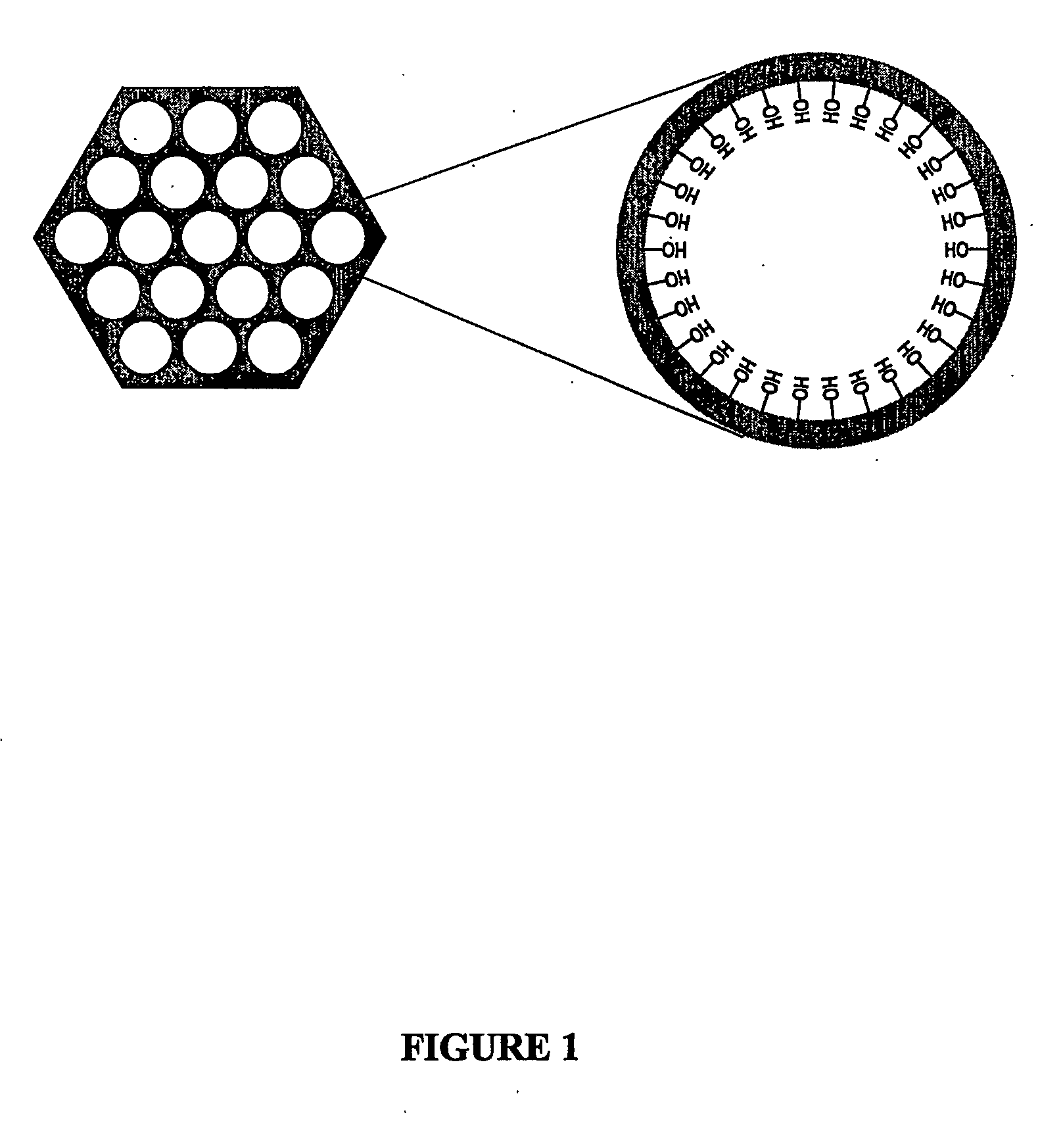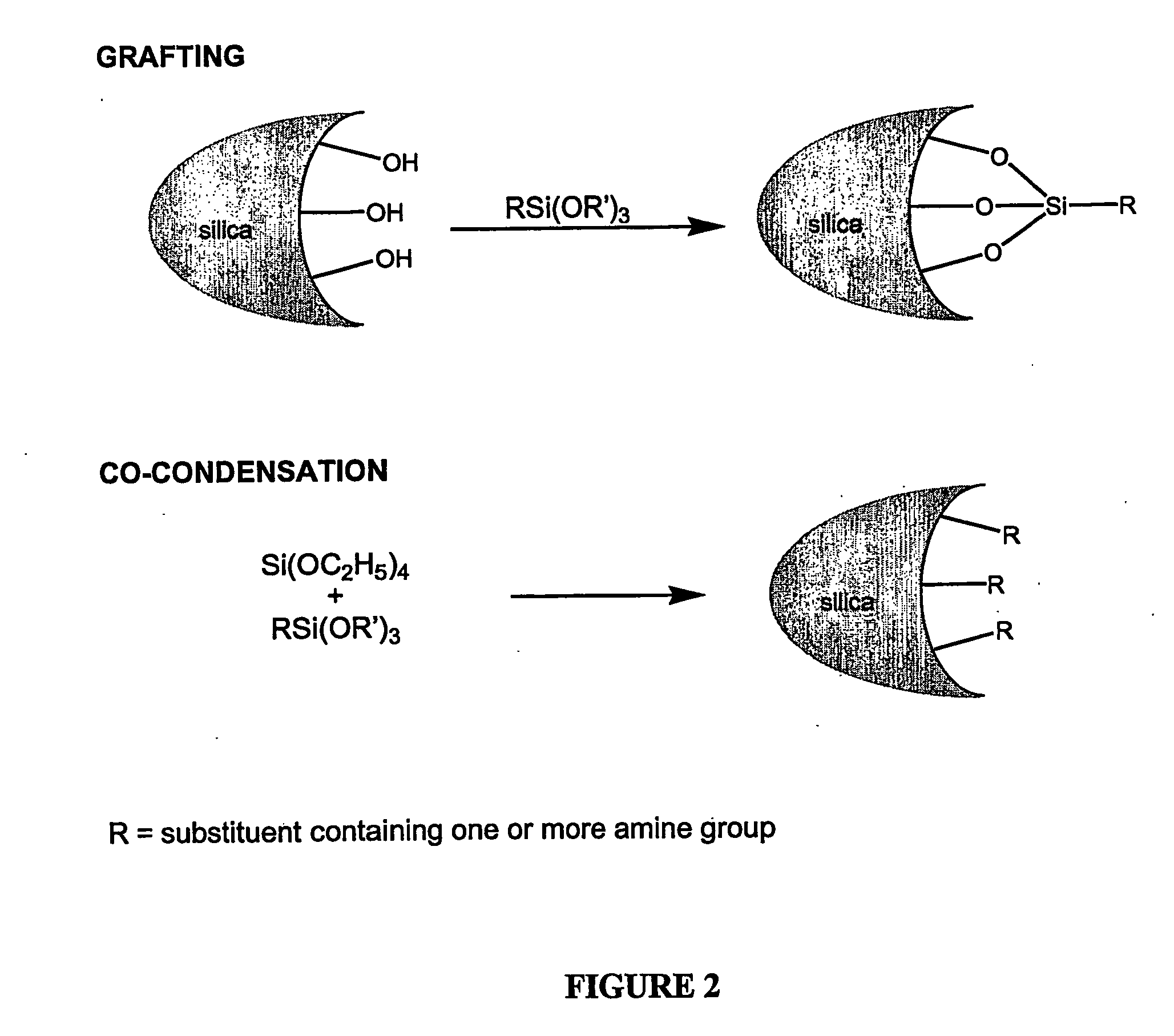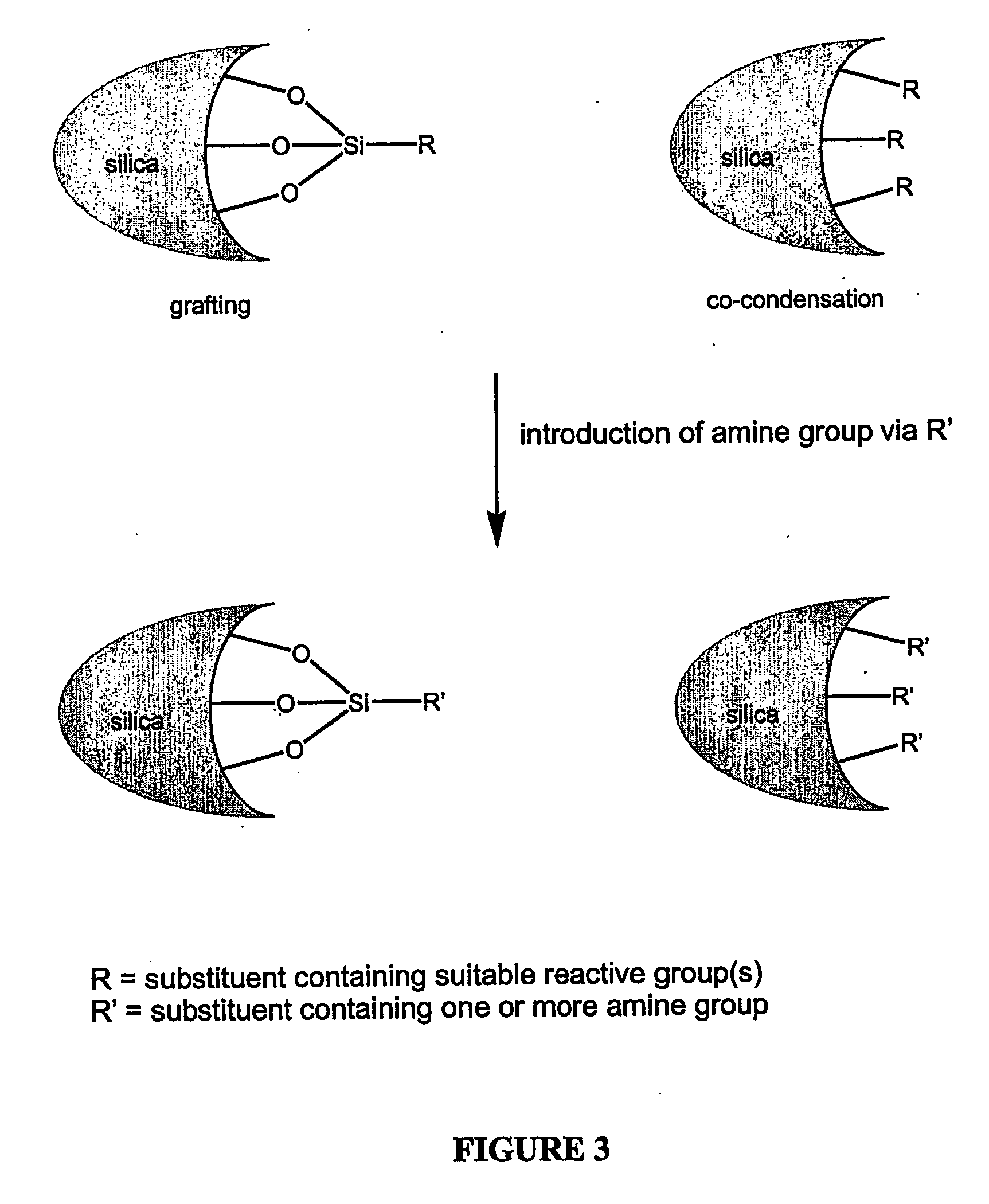Modified adsorbent for dry scrubbing and use thereof
a technology of modified adsorbents and dry scrubbing, which is applied in the field of modified amine adsorbents, can solve the problems of reduced capacity, reduced capacity, and use of aqueous solutions of low molecular weight alkanolamines
- Summary
- Abstract
- Description
- Claims
- Application Information
AI Technical Summary
Benefits of technology
Problems solved by technology
Method used
Image
Examples
example 1
Preparation of Type II Adsorbents
[0056] Several samples of Type II adsorbents according to the present invention were prepared, using the various techniques outlined herein. In particular, adsorbents were prepared that consist of mesoporous silica or organosilica containing supported amines.
[0057] One sample (SA-124) of adsorbent containing supported amine was prepared using 2 g of expanded-extracted MCM-41 material, which was added to a mixture containing 1 g of diethanolamine and 10 g of water. The mixture was stirred at room temperature for 2 hours and subsequently dried in an oven at 60° C. for 40 hours. The resulting weight increase was 35.9% (2 g→2.718 g).
[0058] A second sample (SA-126) of adsorbent containing supported amine was prepared using the same procedure as described for the first sample, except that N-methyl-diethanolamine (1 g) was used in place of diethanolamine. The resulting weight increase was 17.3% (2 g→2.345 g).
[0059] A third sample (SA-127) of adsorbent c...
example 2
Preparation of Type I Adsorbents
[0062] Several samples of Type I adsorbents according to the present invention were prepared, using the various techniques outlined herein. In particular, adsorbents were prepared that consist of amine surface functionalised mesoporous silica or organosilica.
[0063] Synthesis of MCM-41 mesoporous silica (SA-117) was accomplished according to the following procedure: 68.325 g of cetyltrimethylammonium bromide (CTAB) was added to a mixture containing 48.1 g of tetramethylammonium hydroxide (TIAOH) and 463.7 g of distilled water, after mixing under magnetic stirring for 30 min, 25 g of Cab-O-Sil™ (fumed silica) was added slowly to the solution. Stirring was maintained at room temperature for 1 h, the mixture was transferred into a Teflon-lined autoclave, which was the heated to 100° C. for 40 h. The MCM-41 material was obtained by filtration, washing with water, drying at ambient condition and calcination at 540° C. for 5 h. The surface area of this mat...
example 3
Production of Periodic Ethylene-Bridged Mesoporous Silica for Use in Preparation of Type IV Adsorbents
[0073] Periodic ethylene-bridged mesoporous silica (FIG. 7) was prepared using bis(triethoxysilyl)ethylene (BTSENE; (C2H5O)3Si—CH═CH—Si(OC2H5)3) as precursor. BTSENE was prepared via metathesis of vinyltriethoxysilane (VTES, CH2═CH—Si(OC2H5)3) according to Marciniec et al.'s method (B. Marciniec, H. Maciejewski, J. Gulinski and L. Rzejak J. Organomet. Chem. 362 (1989) 273). The corresponding ordered mesoporous material was prepared via supramolecular templating procedures under acid conditions as described hereafter.
[0074] In one preparation, 2 g of Brij® 76 ((C18H37(OCH2CH2)10OH) or 1.92 g Brij® 56 ((C16H33(OCH2CH2)10OH) was dissolved in 10 g of distilled water and 50 g of 2 M hydrochloric acid at 50° C. After complete dissolution, BTSENE (3.52 g) was added, and the mixture stirred at 50° C. for 20 h, followed by another 20 h period at 50° C. under static conditions. A white prec...
PUM
| Property | Measurement | Unit |
|---|---|---|
| Temperature | aaaaa | aaaaa |
| Temperature | aaaaa | aaaaa |
| Temperature | aaaaa | aaaaa |
Abstract
Description
Claims
Application Information
 Login to View More
Login to View More - R&D
- Intellectual Property
- Life Sciences
- Materials
- Tech Scout
- Unparalleled Data Quality
- Higher Quality Content
- 60% Fewer Hallucinations
Browse by: Latest US Patents, China's latest patents, Technical Efficacy Thesaurus, Application Domain, Technology Topic, Popular Technical Reports.
© 2025 PatSnap. All rights reserved.Legal|Privacy policy|Modern Slavery Act Transparency Statement|Sitemap|About US| Contact US: help@patsnap.com



